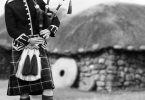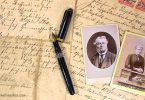One of the more frustrating parts of genealogy research can be finding your female ancestors. This is true whether you are a beginner or a pro. How many census records have you looked at, only to be confronted with a female ancestor who is married, and no context as to what her maiden name might have been? Have you ordered death or birth certificates, and the mother’s maiden name was left off, or even not listed at all? Don’t be concerned. You are not alone. This is a common problem in genealogy, and there is a way around it.
First of all, why is it so challenging to find a female ancestor (or find their family before marriage)? It’s easy. Until very recent times, like the past thirty years or so, the entities that created official government documents that might mention your ancestors simply did not view married women as independent people. Once a woman got married, she was considered as essentially the same person as her husband. Any trace of her former identity was wiped out.
This was so ingrained into society that a woman herself might believe it, and not talk to her children or grandchildren about her parents, siblings, and grandparents. If those relatives did not live nearby, a woman’s descendants might not know anything about her family before marriage.
Maiden names were viewed as discarded names, so they were not included in many government documents. Even wills might not give a clue as to a woman’s birth family, as a man would just name his wife by her first name. If the wife wrote a will, she would refer to herself by her married name.
So, how do you find enough information about your female ancestors to learn who they really were as people? How do you find their original families, so you can open up new ancestral lines in your family tree to research? It’s easy. Just look outside of normal sources, and throw in a little sleuthing.
You might get lucky with a vital record and find a woman’s maiden name. However, if you don’t, dig more deeply. There are tons of alternative record sources that may give you the information you need. A good one is military pension records. If a man is applying for a military pension, or if his widow is applying based on his service, the marriage has to be proven. Nine times out of ten, the maiden name of the wife will be mentioned in the pension record when proving the marriage.
Church marriage records often record the maiden name of the wife, even if state vital records do not (though they sometimes do). Old newspaper records with marriage announcements are great sources for maiden names (as are obituaries, sometimes). You can even look at the middle names of a woman’s children, and compare them to the surnames of neighbors in census records. It was common to give a maiden name as a middle name to a child. You might find your female ancestor’s parents living nearby.
Your female ancestors are out there. You just have to be crafty when looking for them. Think outside of the box, use alternative records, and put your detective skills to use. You can find them.






